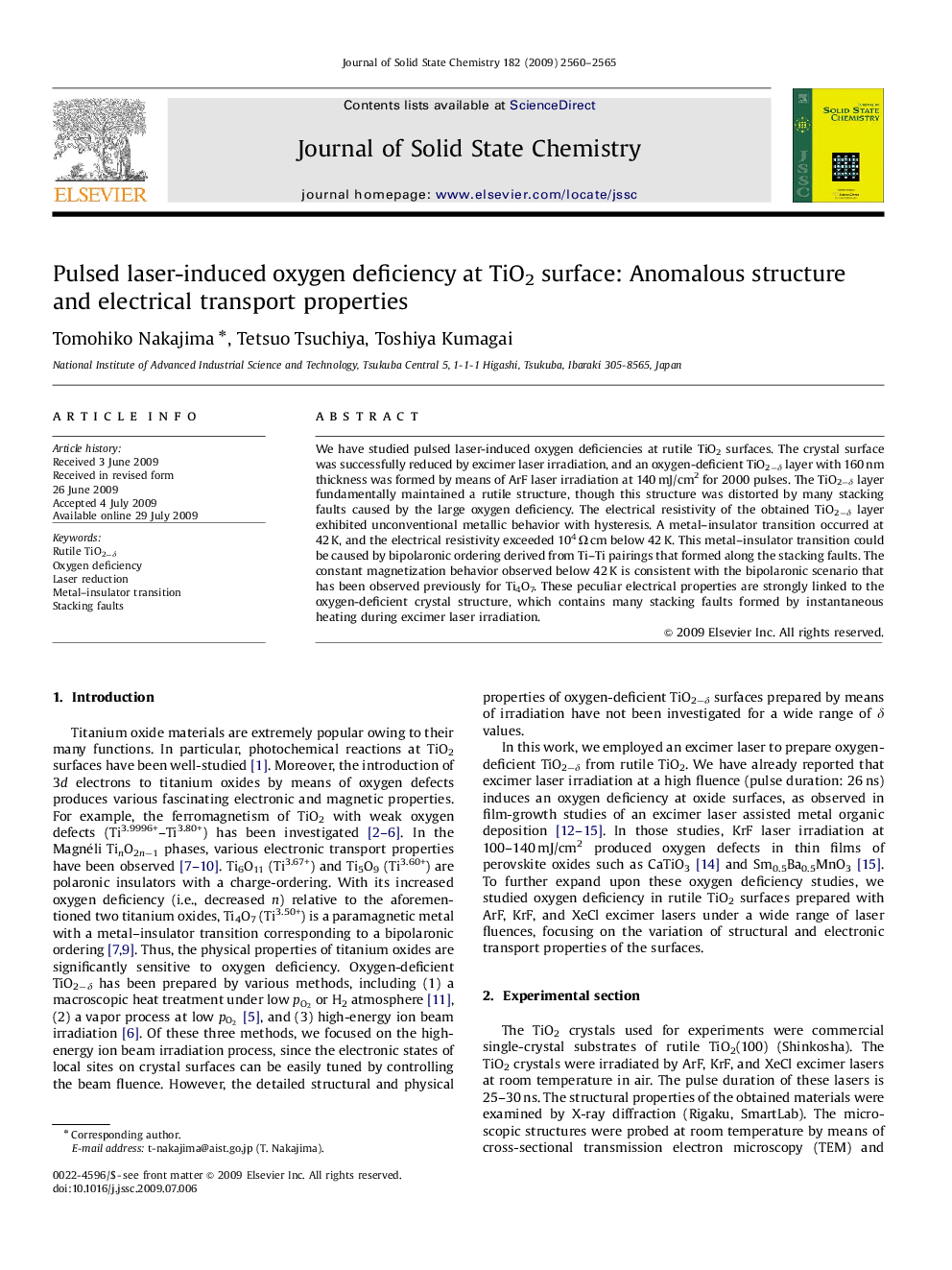| Article ID | Journal | Published Year | Pages | File Type |
|---|---|---|---|---|
| 1331552 | Journal of Solid State Chemistry | 2009 | 6 Pages |
We have studied pulsed laser-induced oxygen deficiencies at rutile TiO2 surfaces. The crystal surface was successfully reduced by excimer laser irradiation, and an oxygen-deficient TiO2−δ layer with 160 nm thickness was formed by means of ArF laser irradiation at 140 mJ/cm2 for 2000 pulses. The TiO2−δ layer fundamentally maintained a rutile structure, though this structure was distorted by many stacking faults caused by the large oxygen deficiency. The electrical resistivity of the obtained TiO2−δ layer exhibited unconventional metallic behavior with hysteresis. A metal–insulator transition occurred at 42 K, and the electrical resistivity exceeded 104 Ω cm below 42 K. This metal–insulator transition could be caused by bipolaronic ordering derived from Ti–Ti pairings that formed along the stacking faults. The constant magnetization behavior observed below 42 K is consistent with the bipolaronic scenario that has been observed previously for Ti4O7. These peculiar electrical properties are strongly linked to the oxygen-deficient crystal structure, which contains many stacking faults formed by instantaneous heating during excimer laser irradiation.
Graphical abstractA pulsed laser-irradiated TiO2−δ substrate showed an unconventional metallic phase, with hysteresis over a wide range of temperatures and a metal–insulator transition at 42 K.Figure optionsDownload full-size imageDownload as PowerPoint slide
